Creating content is hard. Well, it should be. If you’re doing it right.
Anyone can throw together a low-quality blog post. But not if you want results from your content marketing.
The best content creators give their target audience what they want. They make visual content that’s vibrant and valuable. Even when it’s written. And you can too.
But we’re not all graphic designers. And some of us can’t spend a ton of time on our social media marketing strategy. So, what’s the solution?
Let’s say that’s you. These 10 social media content creation tools have got your back:
- Google Trends – discover content topic ideas
- Ahrefs Keyword Generator and Explorer – target keywords
- CoSchedule Headline Studio – create an eye-catching title
- Clearscope – optimize for SEO
- Canva – create high-quality visuals
- GIPHY – give your written content some life
- Alitu – create, edit, and publish your podcast
- StreamYard – create professional live streams
- Grammarly – improve your writing and spellcheck
- Quuu Promote – increase your content’s social media shares
1. Google Trends – discover content topic ideas
Sometimes, the hardest part of social media content creation is getting started. You know you want to rank highly on Google. And get a ton of new followers. But what the heck do you talk about?
Google Trends is a free tool that lets you “explore what the world is searching”. It can help to form your content strategy. And it can be a powerful marketing tool. If you know how to use it.
It works by turning search data into an easy-to-read graph. This makes comparing search terms easier. And helps users understand how interest in topics and terms change over time.
Let’s say you owned a surf shop. You’d be looking at the topics ‘Surfing’ and ‘Surfboards’ in general. But then you’d need to get specific with your search terms.
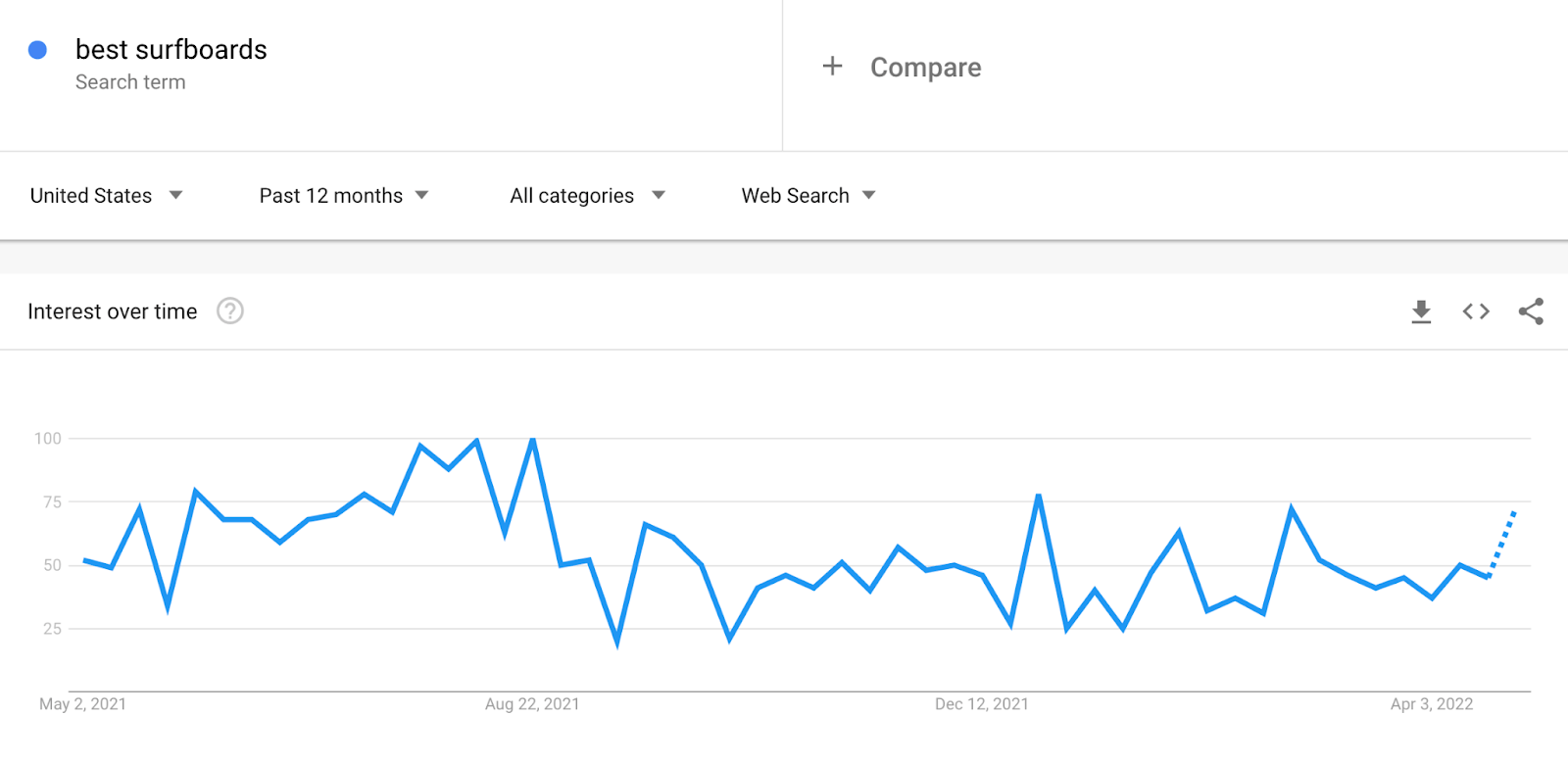
Source: Google Trends
Google Trends can help by showing you related search terms you might not have even thought of. Dive into a few of these. Piece together some content ideas. And before you know it, your content calendar will be filling up!
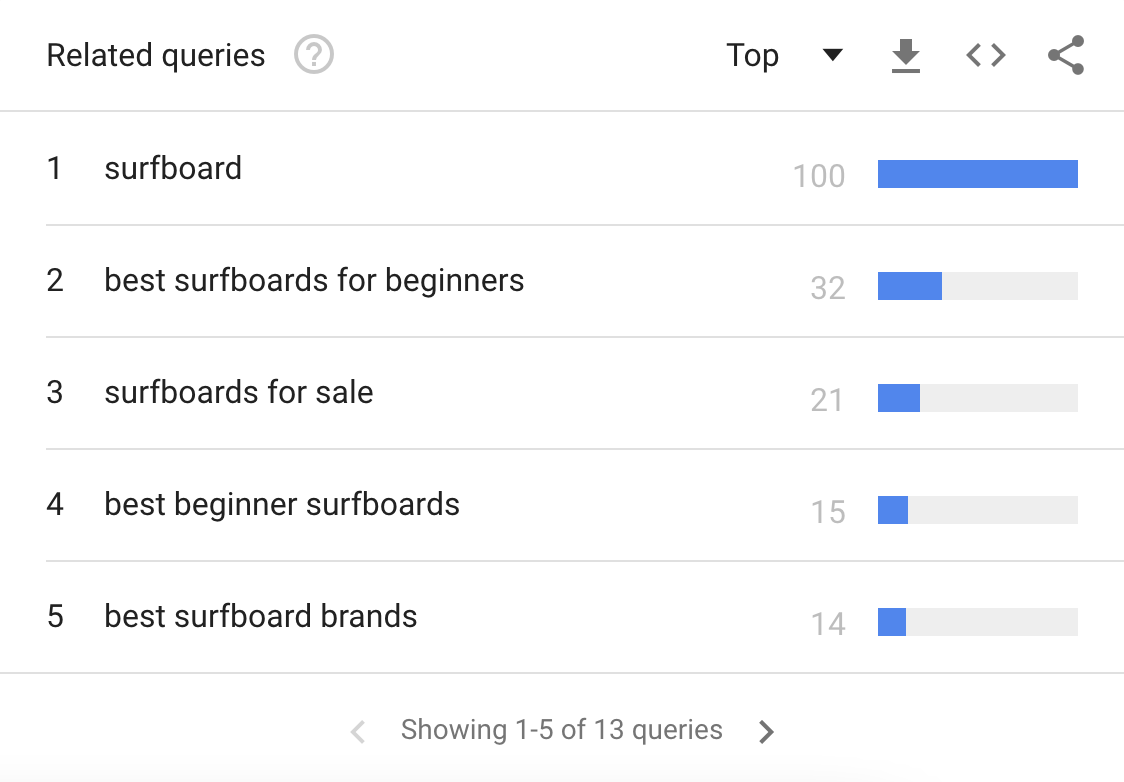
Semrush covered just how much Google Trends can help you to:
- Understand the search volume of keywords
- Identify seasonal trends
- Avoid temporarily popular keywords
- Find trending relevant topics
- Predict future trends
- Find related queries
- Optimize your SEO strategy
This can give you way more inspiration for posting on social media. You can do some short posts about trending topics. Curate content for topics you don’t know enough about. Or link to more in-depth blog posts.
It’s easy to use. And it doesn’t cost anything to try. Give it a shot.
2. Ahrefs Keyword Generator and Explorer – target keywords
If you’re looking for another free and totally useful tool, Ahrefs got you. Nailing down topics for social media content creation is hard. But choosing specific keywords is even harder.
Ahrefs Keyword Generator finds thousands of keyword ideas for you in seconds. You’ve just got to give it a phrase to work from.
Let’s try “content marketing”.

Don’t forget to pick your target location too. And choose the search engine you’re aiming for. Then, hit search.
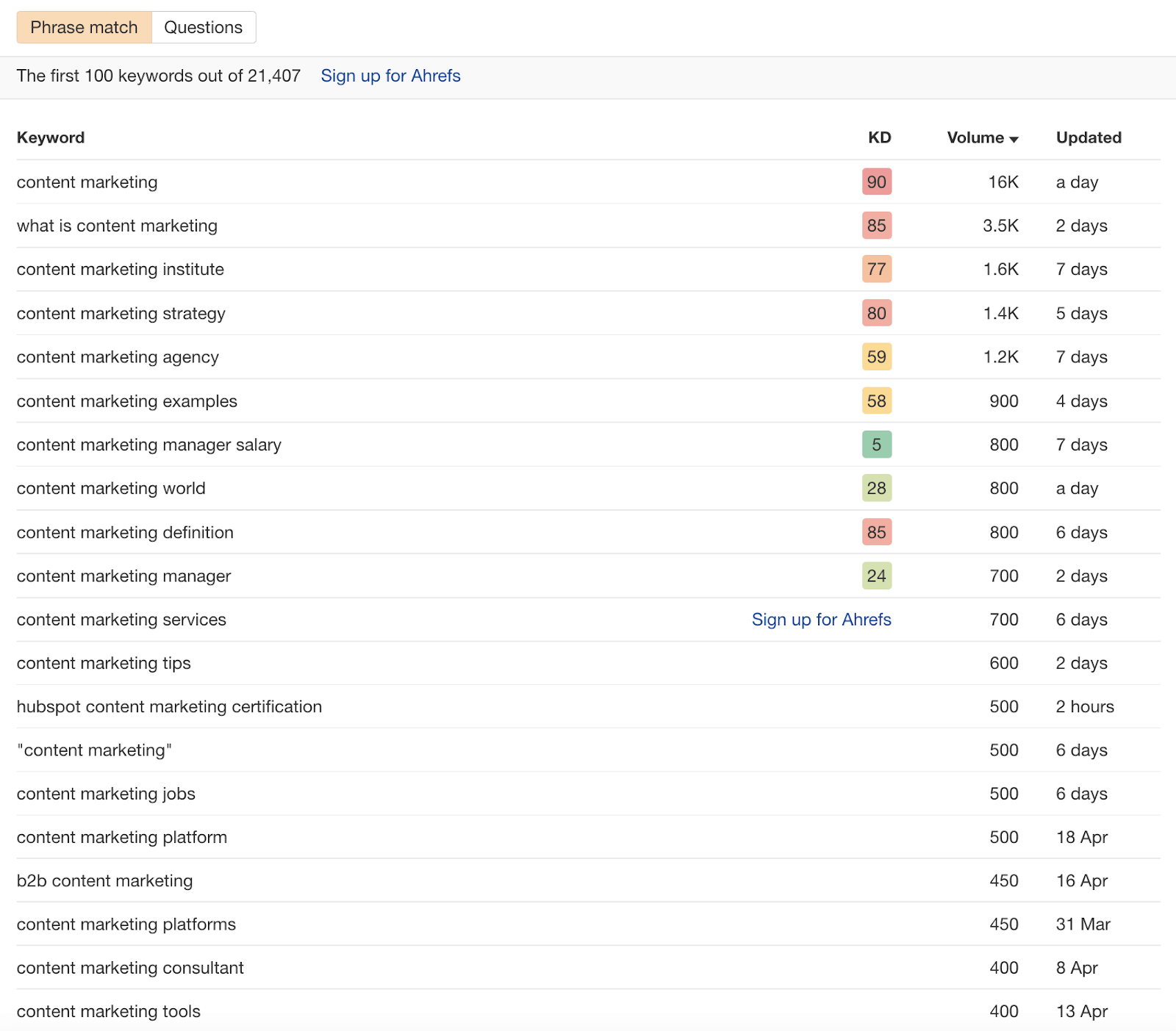
That’s enough to get you started! Social media management is all about being organized. And you’ll be able to plan out a basic content strategy from one page alone. You can also use these suggestions for hashtags when you post.
You can even filter by ‘Questions’. These are a great basis for tutorials and how-to content.
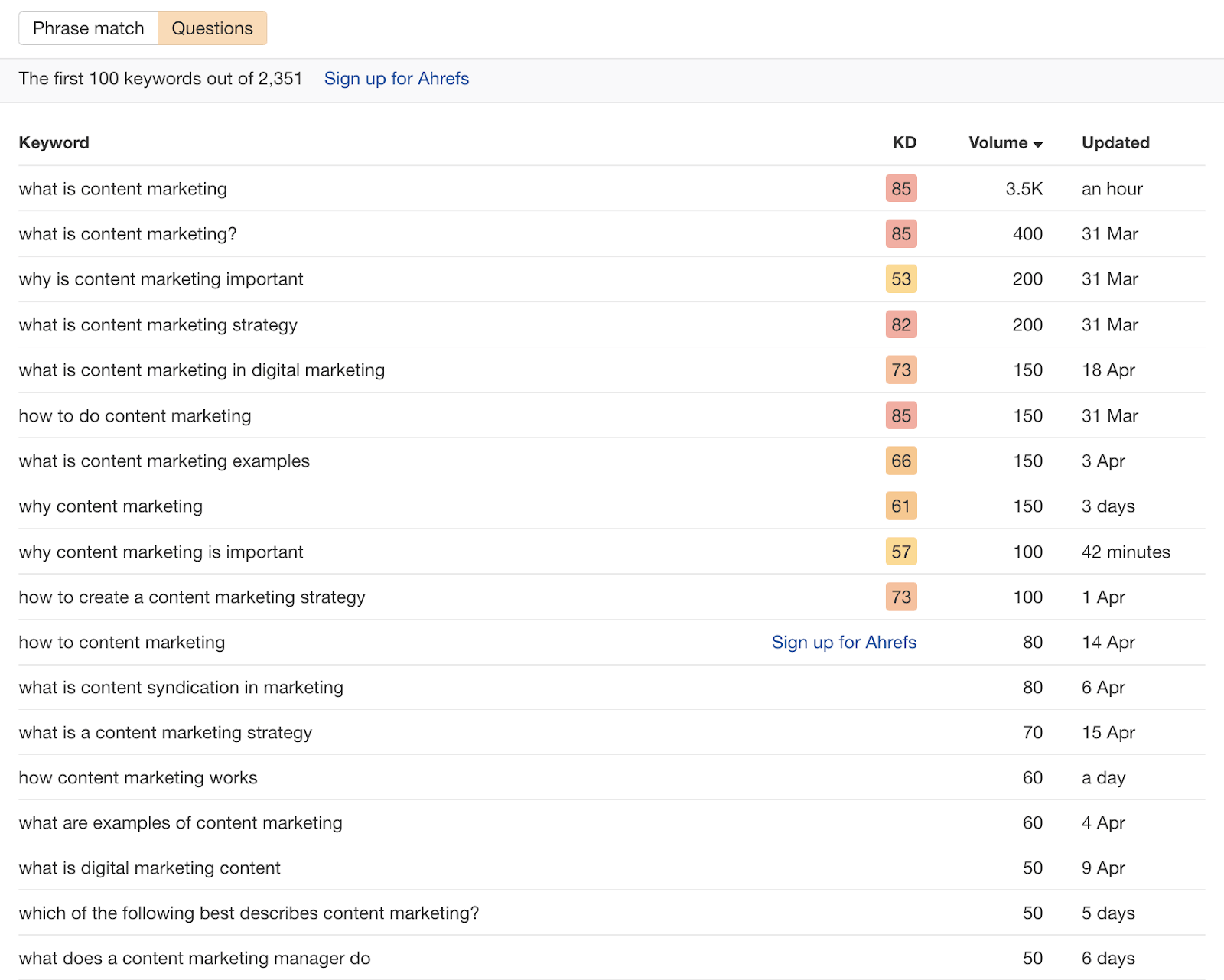
KD stands for Keyword Difficulty. And that’s how hard it’ll be to rank in the top 10 for those keywords. Volume is the estimated average number of searches per month.
You get a little taster in this free version. But if you want more detail, you’ll need to upgrade to the paid Keywords Explorer. This runs on a database of over 7 billion keywords. With fresh data added every month.
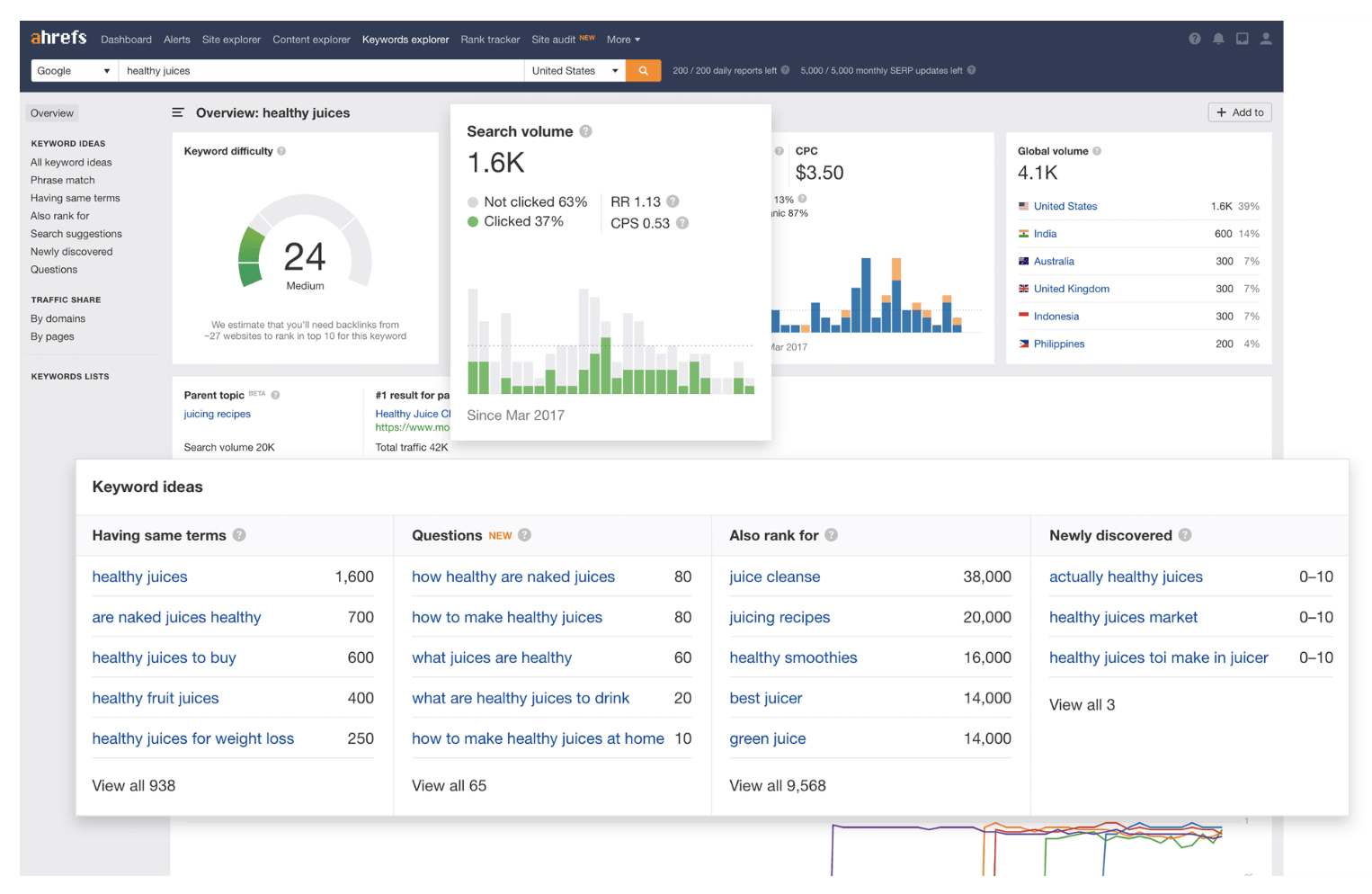
You’ll have to spend some dolla. But it’s worth it to take a deep dive into what users are searching for. I use it to plan most of Quuu’s blog posts.
It’s super helpful to work out things like traffic potential. And segment by location. Then it’s more likely to appeal to your audience when you share on social media.
Because there’s no point in writing a kick-ass article if no one you care about will see it!
3. CoSchedule Headline Studio – create an eye-catching title
Your content’s title is its first impression for people. And sometimes, it’s the last. On average, 8 out of 10 people will read headline copy. But only 2 out of 10 will read the rest.
Your words have to draw people in. Otherwise, it’s sayonara. Especially with social media content creation. Where a river of content is flowing through every second.
CoSchedule Headline Studio scans your headline for these important things. Balance them right. And you’ll have an easy-to-read title that commands attention.
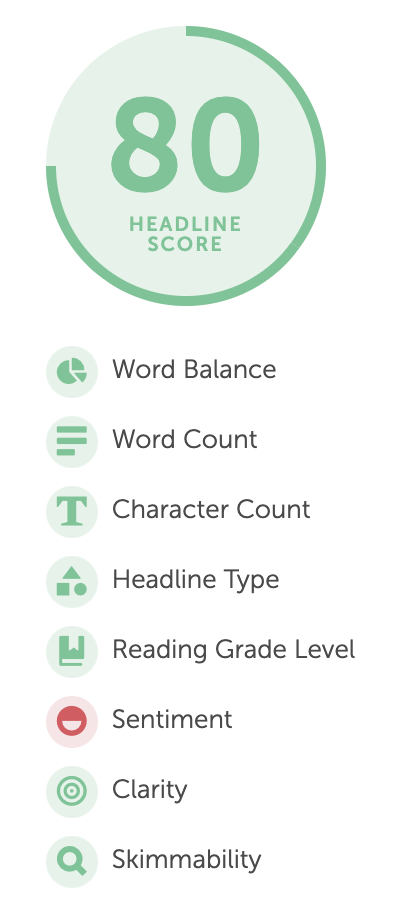
Did I mention it’s free too? You just have to part with a few personal details. After that, you’re good to go!
So, how does it work?
- Type in your title
- You’ll get an overall headline score
- It’ll take into account the balance of common, uncommon, emotional, and power words
- Character and word counts are analyzed too
- Preview your headline on search engines and social platforms
- It logs headline history so you can compare each version
I use it for most of mine:

Now, this tool isn’t perfect. It’s an algorithm. So you might think of a cracking title that doesn’t score so well. But go with your gut. And use the metric as more of a guide.
Then share your masterpiece on social media. And capture the imagination of your audience.
4. Clearscope – optimize for SEO
Most content marketing strategies have SEO as the end goal. And if you want to rank on Google, keywords are super important.
Clearscope is my go-to tool for this. And like CoSchedule’s tool, it gives you a content grade.
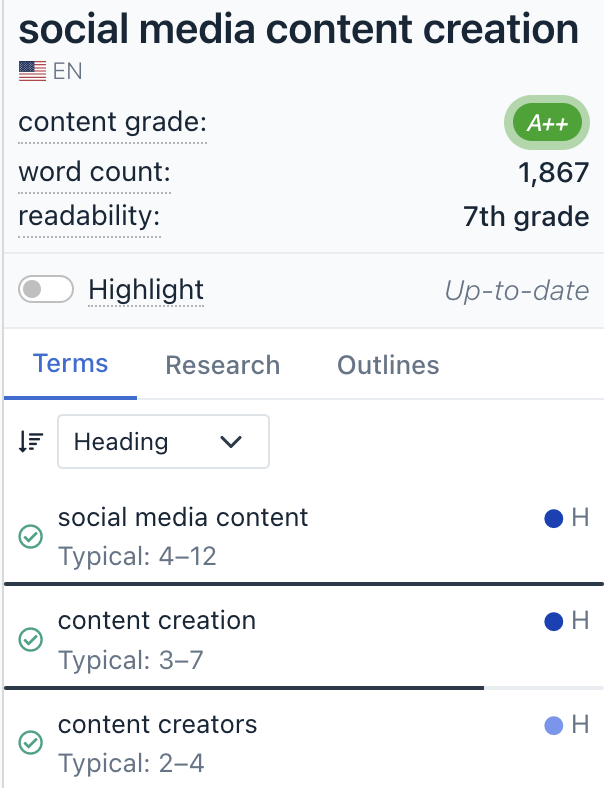
Google’s crawler is a bot. So, you want to make your content easy for it to read. That way, it understands what it’s about. And can show it to the right searchers.
Google’s ultimate goal is to give people the most relevant answers to their queries. As fast as possible. So content relevance is paramount. And this type of content should:
- Solve a problem
- Be based on keyword research
- Be timely
- Include plenty of detail to answer search intent
- Target a particular group
Clearscope breaks down and filters keywords based on importance. It’ll show you when to use them and how often. You want to aim for as high a grade as possible. I always go for A++.
Keywords can even be used in things like your social media bio. And Google ranks Twitter content. So it all plays a part in social media content creation.
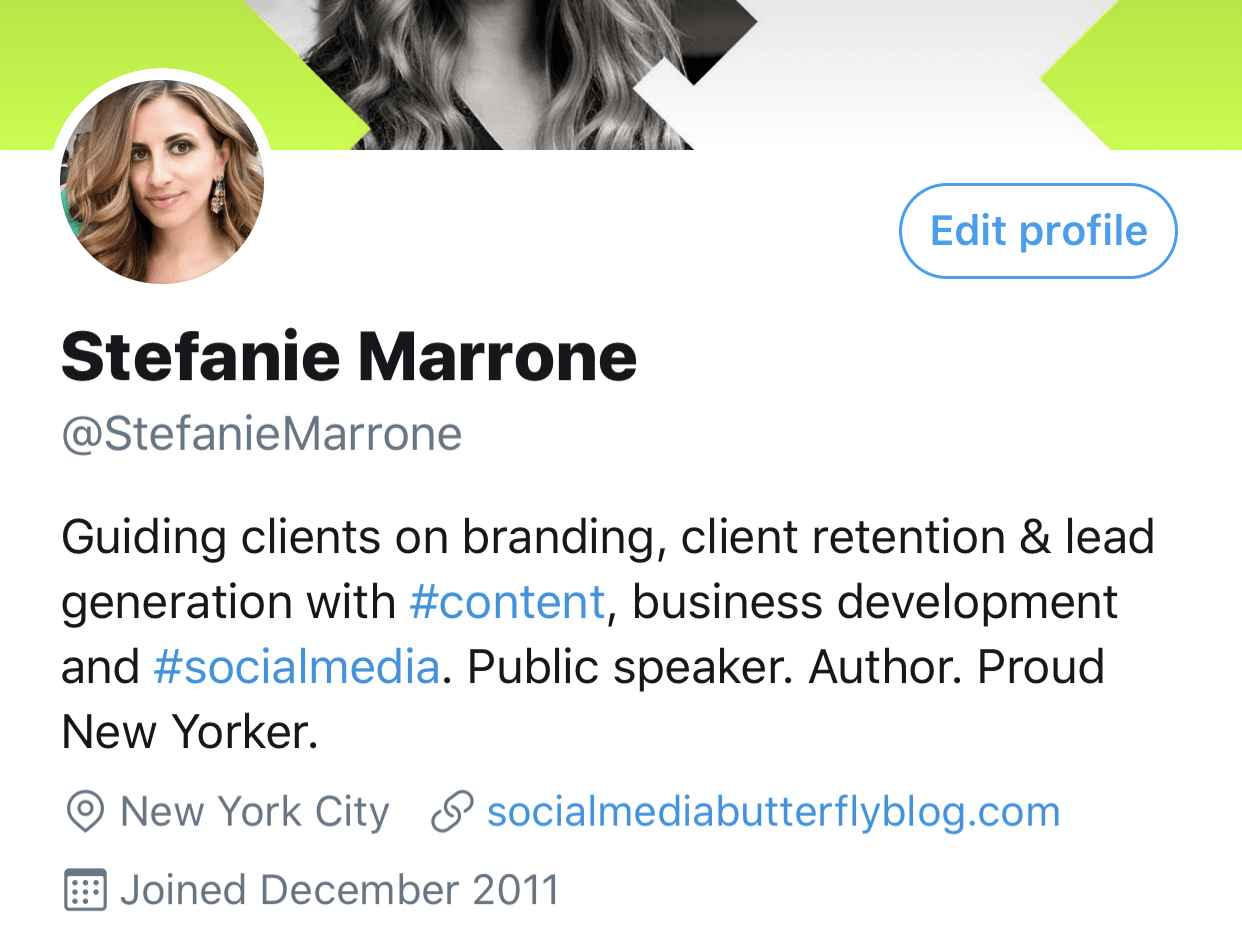
Source: The Social Media Butterfly
Now, we get it. Keywords are obviously important. But don’t forget the most important target in all this. You’re really writing for humans.
You’re trying to please your target audience on social media. And solve their problems with high-quality content. This is what influencers do to build their audiences.
So, use suggested keywords in a way that feels natural. But fit them into your brand voice. Not the other way round.
5. Canva – create high-quality visuals
Infographics are one of the most shareable types of content. And they should play a big role in every social media strategy.
On average, they get 3x more shares than any other type of social media content creation. Because they can turn a wall of text into something clear and super appealing.
Here’s an example:

Visuals increase learning and retaining information by up to 78% too. So, they can be great for teaching potential customers about your product or service.
Canva is the most popular tool. And for good reason. There are tons of templates and drag-and-drop features that make it so easy to use. And it’s not just for infographics, either.
You can do things like:
- Design a style guide for your brand
- Create live video tutorials
- Put together other video content like slideshows, ads, montages
- Bring text to life with animations
- Convert PDFs to online designs
- Make vibrant header banners for your social profiles
- Build clickable landing pages

Source: Canva
They also have plenty of tutorials to walk you through. No previous experience needed.
There’s a free version to get started. And different paid plans that depend on the size of your team. But if you’re a teacher or nonprofit, it’s free for life!
6. GIPHY – give your written content some life
Sometimes, you don’t have a lot of time to sit and design graphics. But you still want to give your content some pizazz.
One of the most underrated types of visual content is the humble GIF. They’re short, looped video clips that you’ll have seen everywhere. They can be subtitled movie or TV reels. Or moving versions of memes.
If you’re a small business, you’ll have a tight budget. But GIPHY is the home of GIFs. And lucky for you, it’s another free tool.
GIFs show your fun side. And can get across emotion and context way faster than text. They appeal to all demographics too.

Source: GIPHY
See what I mean?
Social media channels are a content stream of words. GIFs can be used to make an instant impact. Which is perfect for users mindlessly scrolling.
They can be used in so many ways too:
- A standalone social post
- Replying to a comment in style
- Jazzing up an article
- Creating your own to show off products
- Animating boring data

Source: GIPHY
Great content doesn’t have to be complicated. Especially on social media. Keep it simple. Your audience will thank you for it.
7. Alitu – create, edit, and publish your podcast
Podcasts are getting popular. Over a third of Americans listen to them regularly. And this is only going to increase.
You might think creating one is a bit out of reach. And it’ll take a ton of time and money to buy the right kit. But actually, it doesn’t.
Alitu is the new kid on the block in podcasting. It aims to make it as easy as humanly possible. And it does!
Alitu lets you record with equipment you already have. Then it cleans up the audio. So, you sound as pro as possible. It doesn’t take long either. Try only 15 minutes to create your first episode.
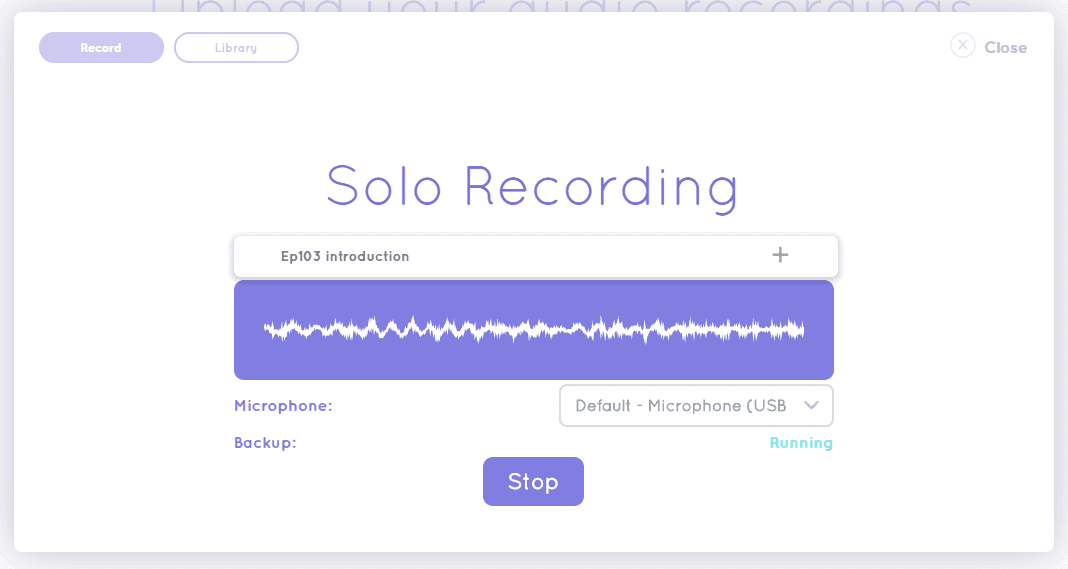
Source: The Podcast Host
The post-production is where it really shines, though. After you’ve recorded, you can:
- Edit to fix silence and mistakes
- Add theme music and fades
- Build a library of regularly-used clips
- Create and optimize the final file
- Publish direct to Buzzsprout, Captivate, Podbean, Spreaker etc.
- Create a video version for YouTube
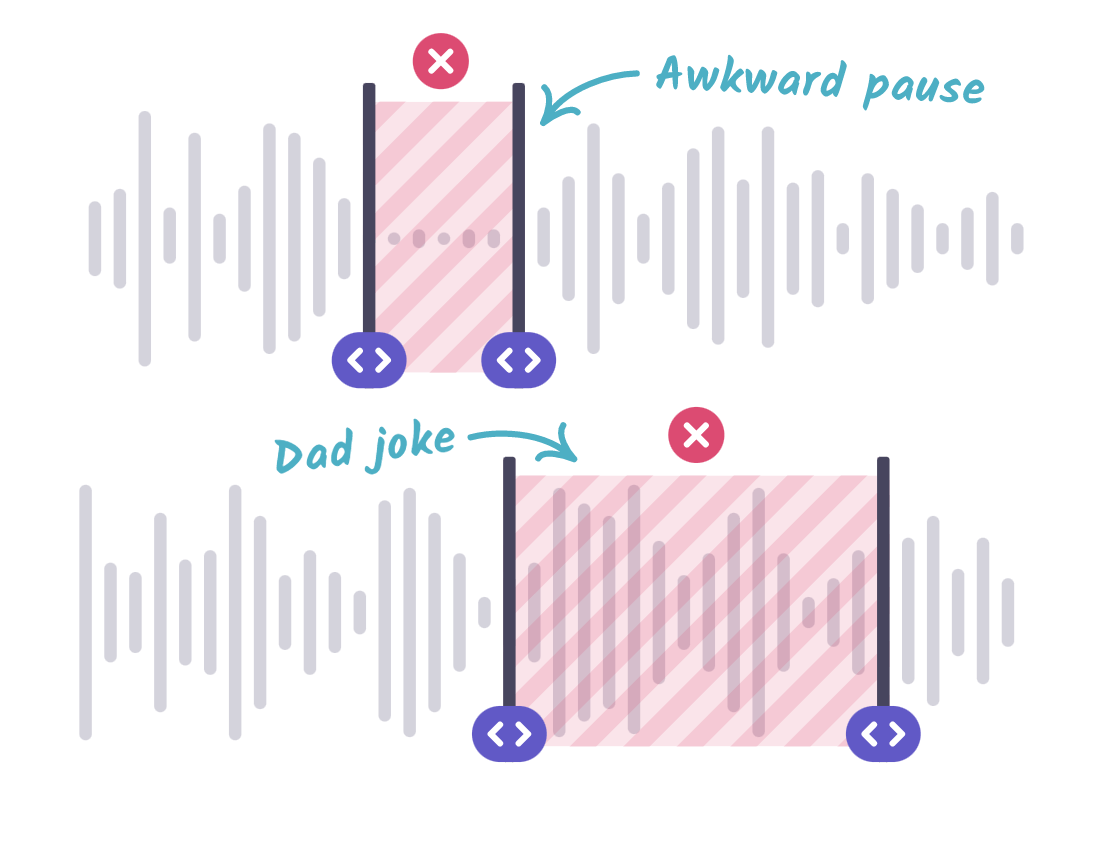
Alitu makes podcasting accessible for everyone. Simply slice and dice your episodes. And cut down tasks that could take hours. Then share on social media.
If you’d like to give it a try, here’s how to set it up:
https://www.youtube.com/watch?v=JMwxpx2wk88&ab_channel=ThePodcastHost
8. StreamYard – create professional live streams
TikTok and Instagram Stories are great for quick social videos. But video marketing can be so much more.
Live streaming is such an underused tactic. Only 25% of 16-34-year-olds use social media for it. And 20% of users aged 35-64. But this is exactly why you should jump on the bandwagon now.
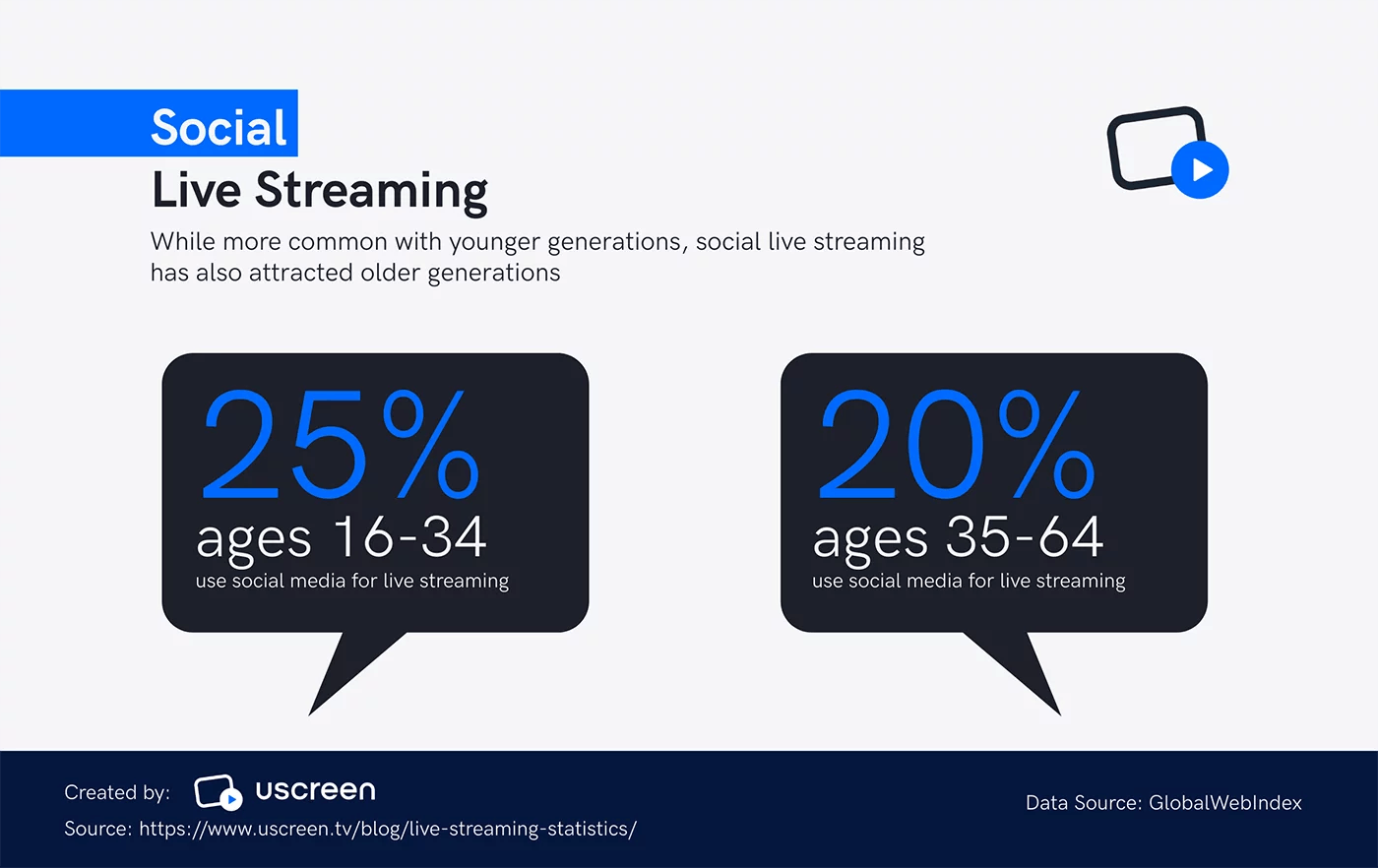
Source: Uscreen
StreamYard gives you a live streaming studio in your browser. You can stream directly to Twitch, Facebook, YouTube, Linkedin, Twitter, and more. It makes social media content creation so simple.
54% of streamers use it for gaming/eSports. But it’s starting to get more popular in other industries. Why not be a trailblazer for yours?
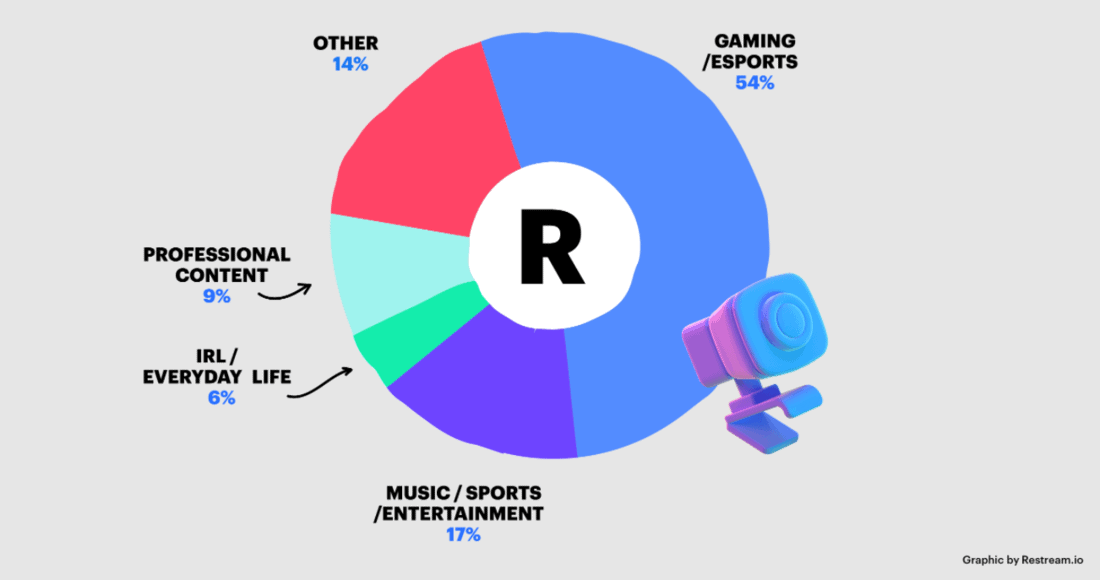
Source: Restream
There are so many options for formats too:
- Q&A sessions
- Expert interviews
- Product or service demos
- Webinars or training
- Behind the scenes tours
- Attending events
- Hosting competitions or giveaways
StreamYard lets you broadcast with up to 10 people on screen. You can also multistream to all your social channels at once. Audience interaction is super slick too. You can feature chosen comments on screen while you stream!
It also makes branding your broadcasts really easy. Especially if you’re new to it all.

Source: StreamYard
There’s even the option to record without going live. (If you’d like to test it all out first!)
It’s one of the slickest tools in the industry. And can make live streaming a breeze. There’s even a free plan for newbies. You’ve really got nothing to lose.
9. Grammarly – improve your writing and spellcheck
Written content is obviously one of the most popular types. But this doesn’t just cover blog posts. Oh no. Everything you post on social media is content creation. And I mean everything.
Every share text. Comment. And status. And you want all of them to be typo-free and sound good. Right?
Grammarly is an AI marketing assistant that can help. It instantly proofreads and highlights any mistakes in your writing. This includes things like:
- Spelling
- Grammar
- Punctuation
- Clarity
- How engaging it is
- Any delivery mistakes
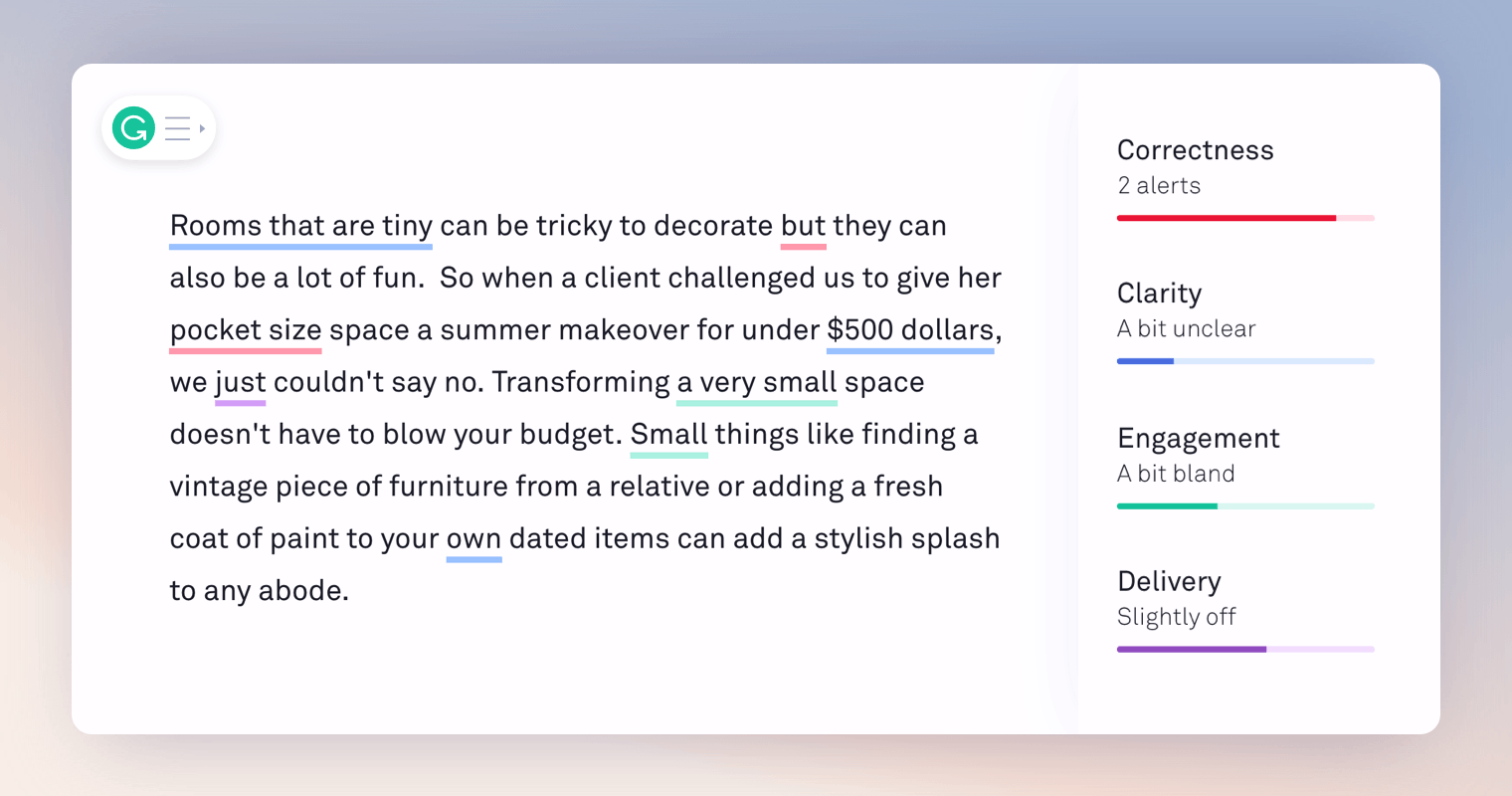
Source: TechCrunch
This is super handy. But don’t just accept all of Grammarly’s suggestions without checking.
You can click to ‘ignore’ certain ones you think aren’t right. When lots of people do this, the creators will adjust the algorithm to make suggestions more accurate in future.
And remember that fact. It’s an algorithm. Don’t let it dictate the way you write. Conversational copy should be unique. Just use it to pick up any little mistakes.
Who needs a human proofreader when Grammarly can do it in seconds. And there’s even a mobile app too. Result!
10. Quuu Promote – increase shares on social media platforms
Social media content creation doesn’t end when you hit “post”. Because most people won’t even get to see your content. Let alone convert.
Ahrefs did some research. And found over 90% of pages get no organic traffic from Google. 90-freakin-percent. I know, right?!
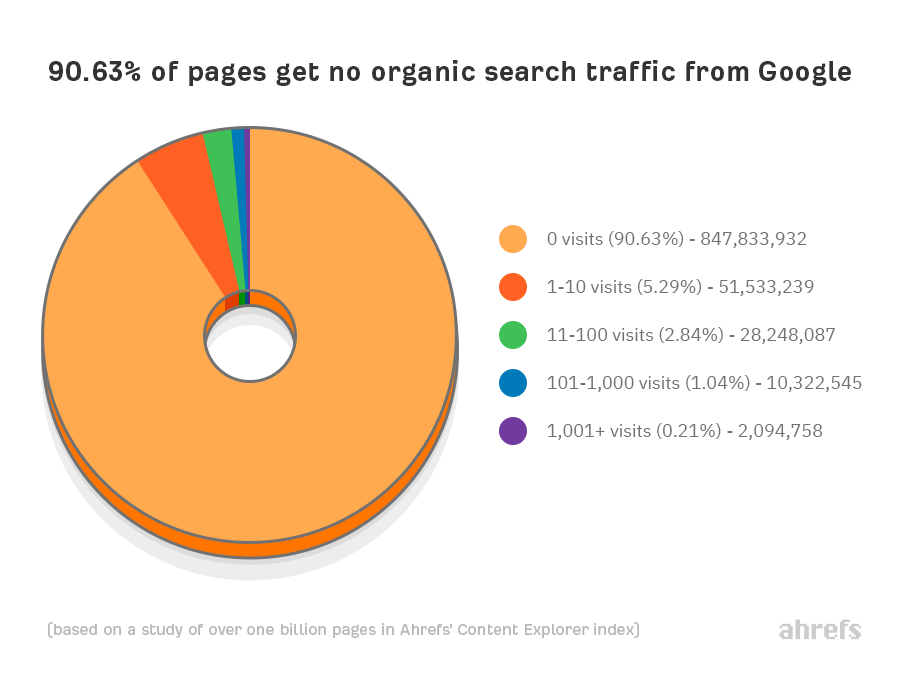
Now, social shares can turn into traffic. But those that don’t still increase your brand awareness.
So, here’s where Quuu Promote comes in. Because it guarantees social shares on Facebook, LinkedIn, and Twitter.
It works best if your site has an RSS feed. That way, the system can stay updated and maintain full automation. Every time you publish something, it’ll be put straight into review.
Next, our AI reviews your content to check it matches our curation guidelines. We’ve worked these out from years of human-reviewing.
Everyone on Quuu has manually signed up to share content from their niche. They’re all real people. They’ve connected their social media accounts. And they’ve all got a genuine interest in what you’re creating.
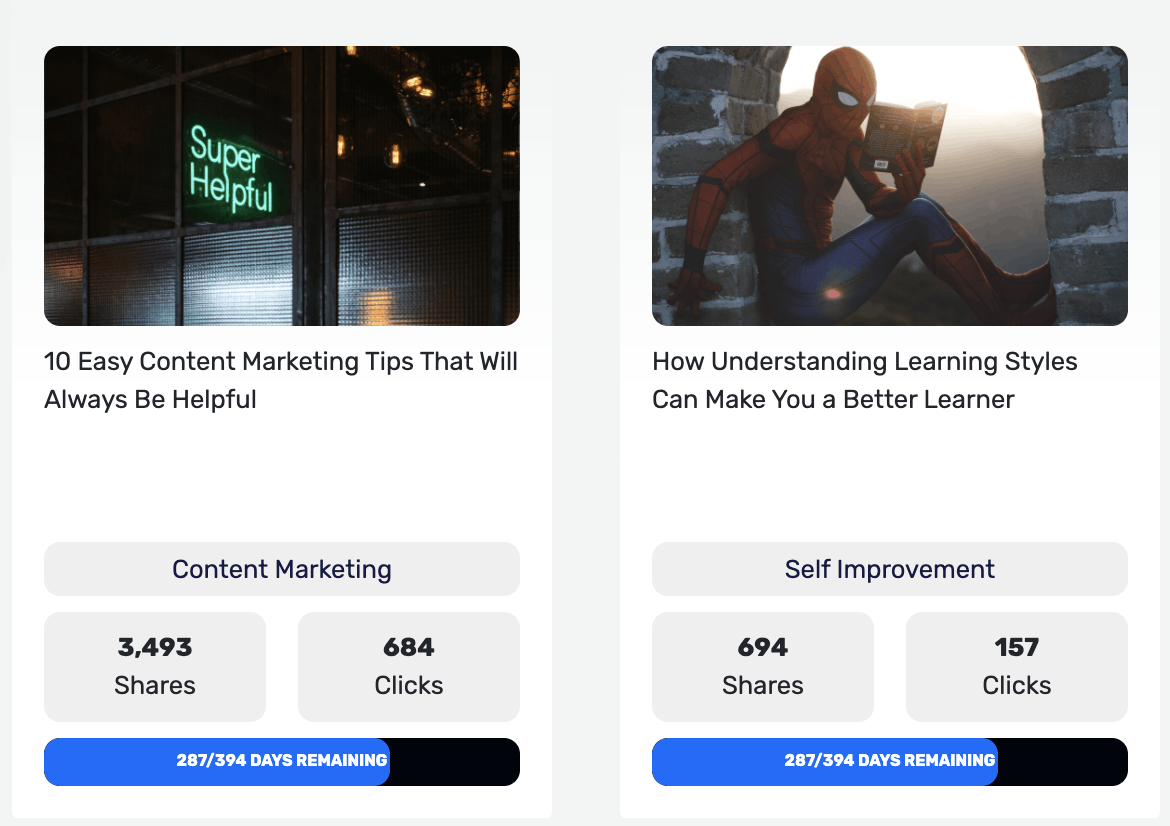
After it’s been approved, you’ve just got to track your shares. And don’t forget to interact with social media posts you’re mentioned in. Social media engagement is a two-way street, you know.
Conclusion
Social media content creation is a huge part of digital marketing. But making high-quality content consistently can feel overwhelming. So, that’s where technology can help.
We covered 10 popular tools that can take the pressure off:
- Google Trends
- Ahrefs Keyword Generator/Explorer
- Coschedule Headline Studio
- Clearscope
- Canva
- GIPHY
- Alitu
- StreamYard
- Grammarly
- Quuu Promote
These are some of our favorite tools. But there are so many more. And it depends on what type of content you’re creating. If you’re a full-time podcaster, dive into that niche more.
Whichever you pick, they’ll make life as a social media content creator easier. So, you can focus on the most important thing. Being creative.
Are there any tools you think should have made this list? Which do you use regularly? Let us know in the comments!






